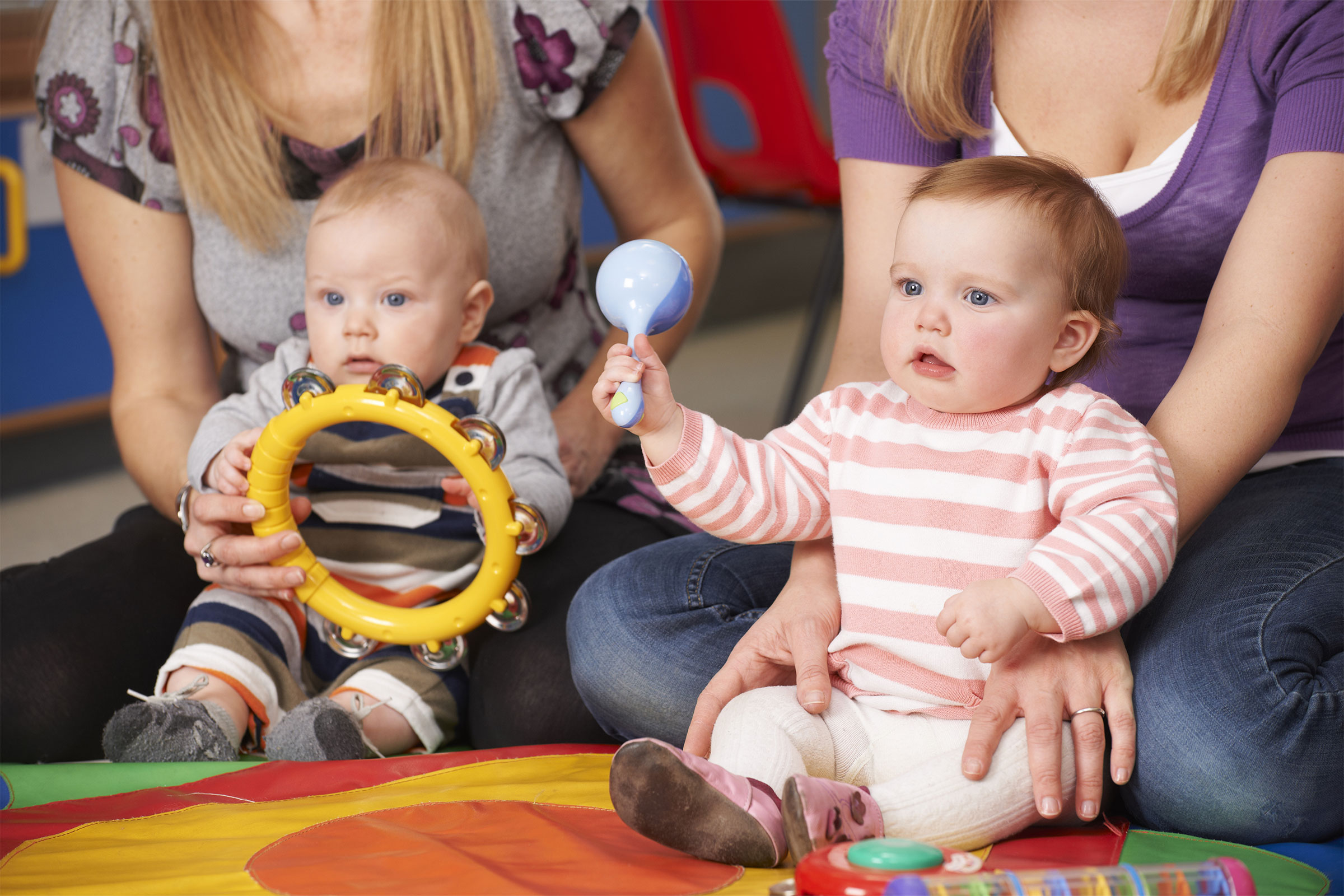Have you ever sung and danced with a large group of toddlers? It is a not-to-be-missed experience! The pure joy and radiant energy as they sing in community - some in words, some with motions, and most with bodies swaying, bouncing, or rocking to the beat - feels amazing to those of us lucky enough to spend this special time with them. Sharing music connects people to each other, increases positive feelings, and provides opportunities for children to learn new language and sound patterns unique to songs. Making music with instruments, a wonderfully noisy prospect in community, helps children refine their gross- and fine-motor movement and enhances their impulse control while encouraging them to feel the rhythm and create corresponding sounds. And, making music together is just great fun! Environments for young children must offer a balance of musical sounds - singing, listening to live or recorded music, and making music with instruments - and silence to support their rapidly developing brains and bodies.
From ballads to jigs and waltzes to Zaouli, rhythmic movement and musicality are part of the human experience. Think back to a time when you were soothing an unsettled baby; most likely, you spoke slowly, patted or rubbed their back rhythmically, shushed, hummed, rocked, or sang lullabies. Why do we do that? These are natural and common ways adults support co-regulation in infants and relate to young children – similar caregiving patterns can be seen in almost all human societies. Throughout history and the world over, humans have engaged in musicality and musical activities, so much so that they can be seen as “a prominent and distinctive characteristic of humankind”. When someone instinctively sings to a baby, they soothe them and connect them with generations of human history with just a few simple notes.
Maria Montessori remarked in The 1946 London Lectures, “[h]ow touching it is that man has this instinct, this joy and sentiment for music. Through the little children these things, art and music, remain forever with humanity.” Through music, the child gains the wisdom of their ancestors, learns about the world around them, learns about themselves, and gains the capacity to share their ideas with others who come after them. Music supports the child’s adaptation to their time and place as well as serving as a means for the evolution of the language and musicality of their culture and society. And, music is accessible to all humans of any social strata with vocalisations and body percussion available to almost everyone. Though some consider musical learning the privilege of the elite, Maria Montessori believed that “if offered the right kind of education from a very early age onwards, anyone is capable of entering the realm of music”. Engaging in musical activities, whether listening to music, dancing to music, or creating music, benefits the very young child’s developing brain and body through: improving moods and reducing stress; stimulating the formation of brain chemicals, like dopamine and oxytocin, that encourage sharing, empathy, and trust; boosting concentration and productivity; improving learning and grades; developing spatial intelligence; and improving vocabulary and creativity.
Singing and playing music with infants and toddlers also feels great to them and their adults! While the young child’s ears and voice are developing to hear and replicate the nuances of the music in the environment, their bodies move instinctively to the music; in fact, Montessori observed that it was through movement that young children came to understand music. Weaving music into each child’s day exposes them to the music of their family, community, and culture, as well as finding various avenues through which to express their emotions. The timbre, rhythm, and tone of music can express the child’s energy and needs – they might request to sing “In and Out the Dusty Bluebells” or “See the Pony Galloping” when they want to move or respond by settling to “All Through the Night” when they are tired. With so many songs for bouncing, walking, galloping, spinning, jumping, marching, and skipping, as well as rocking and dancing, young children explore the capabilities of their bodies and experiment with movement through music. As we adults grow in our musical explorations and expand our infant and toddler musical repertoire, acknowledging the power of the child’s Absorbent Mind, let us heed Maria Montessori’s urging to expose very young children to varied and high-quality musical experiences, supporting their access to this universal language and important vehicle for adaptation, exploration, and self-expression.
Cristel Ruiz, AMI 0–3 Trainer
